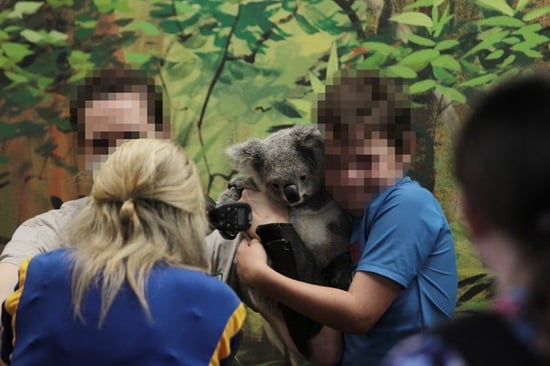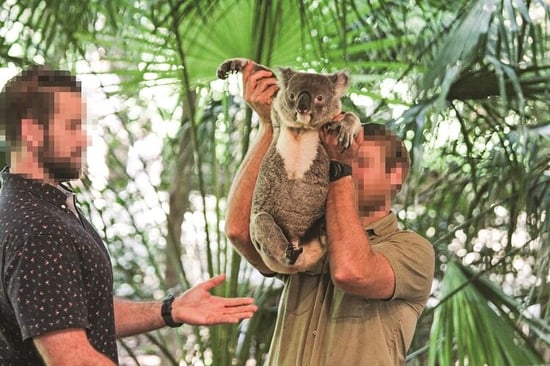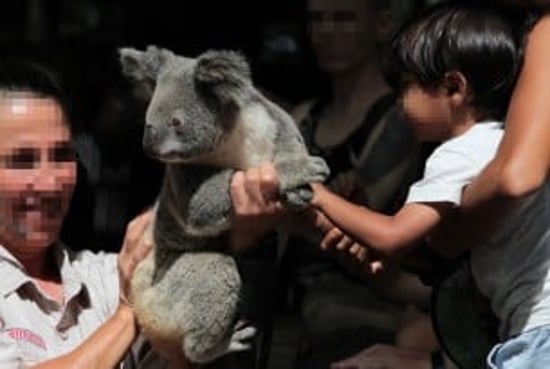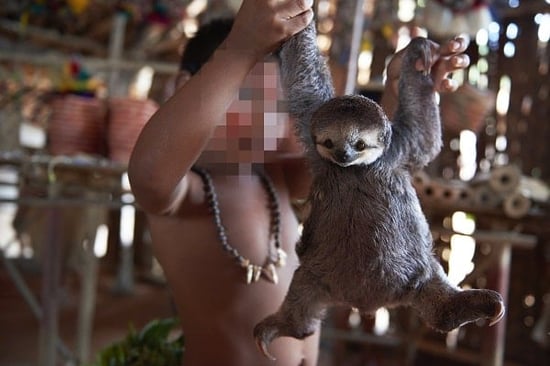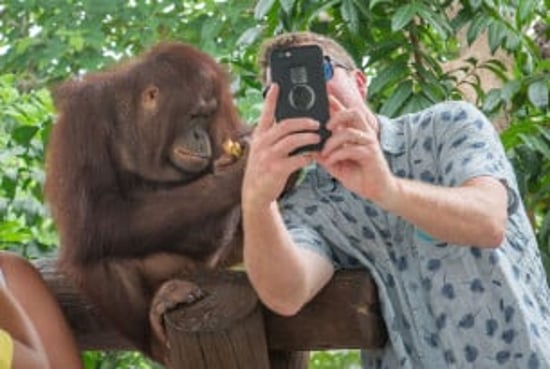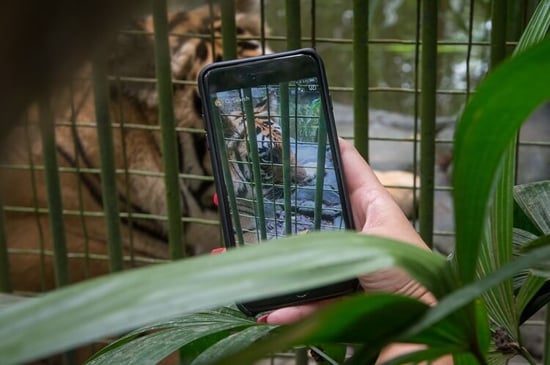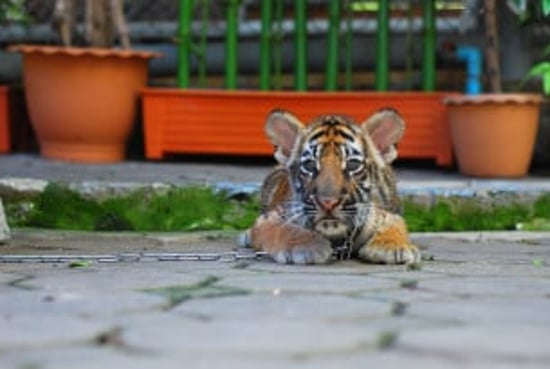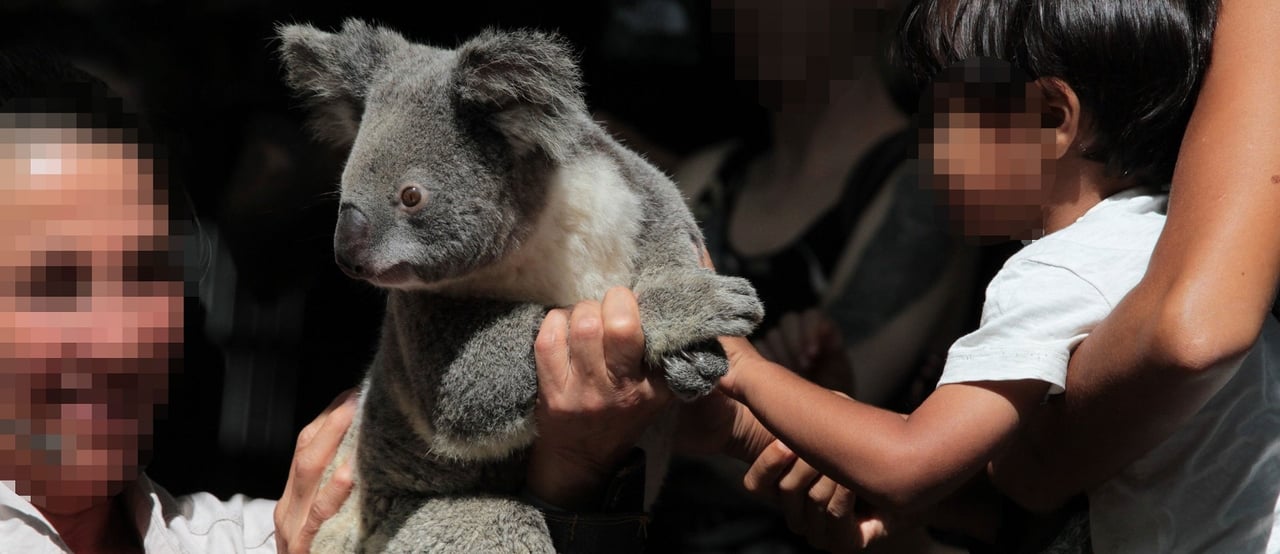
The Hidden Cost of an Animal Selfie
Add your voiceHeader image credit: World Animal Protection / Carol Slater
When you’re on holiday, it may be tempting to stop for a moment and take a quick photo or selfie with an animal that you found incredibly cute. But that little moment could cost them a lifetime of suffering.
You may not be aware of this but thousands of animals are being torn from the wild or bred in captivity just so tourists can take selfies with them to share on social media.
Most visitors who take selfies with wildlife are usually animal lovers who want to interact with animals but have no clue about the cruelty that goes on behind the scenes.
So, during a once-in-a-lifetime trip, it’s understandable that they would want to take a koala photos or a tiger selfies or record a reel with an orangutan. But if they knew about the suffering these animals endure for the sake of a photo opportunity, they would surely put their phones and cameras away.
Each day, these animals go through a roller-coaster of emotions from being terrified to depressed – all for the sake of a holiday photo.
Wild animals are often snatched at birth and thrown into cramped and unsanitary cages in tourist venues. They are deprived of adequate food and water and are constantly surrounded by loud noises as they are passed from one stranger to another.
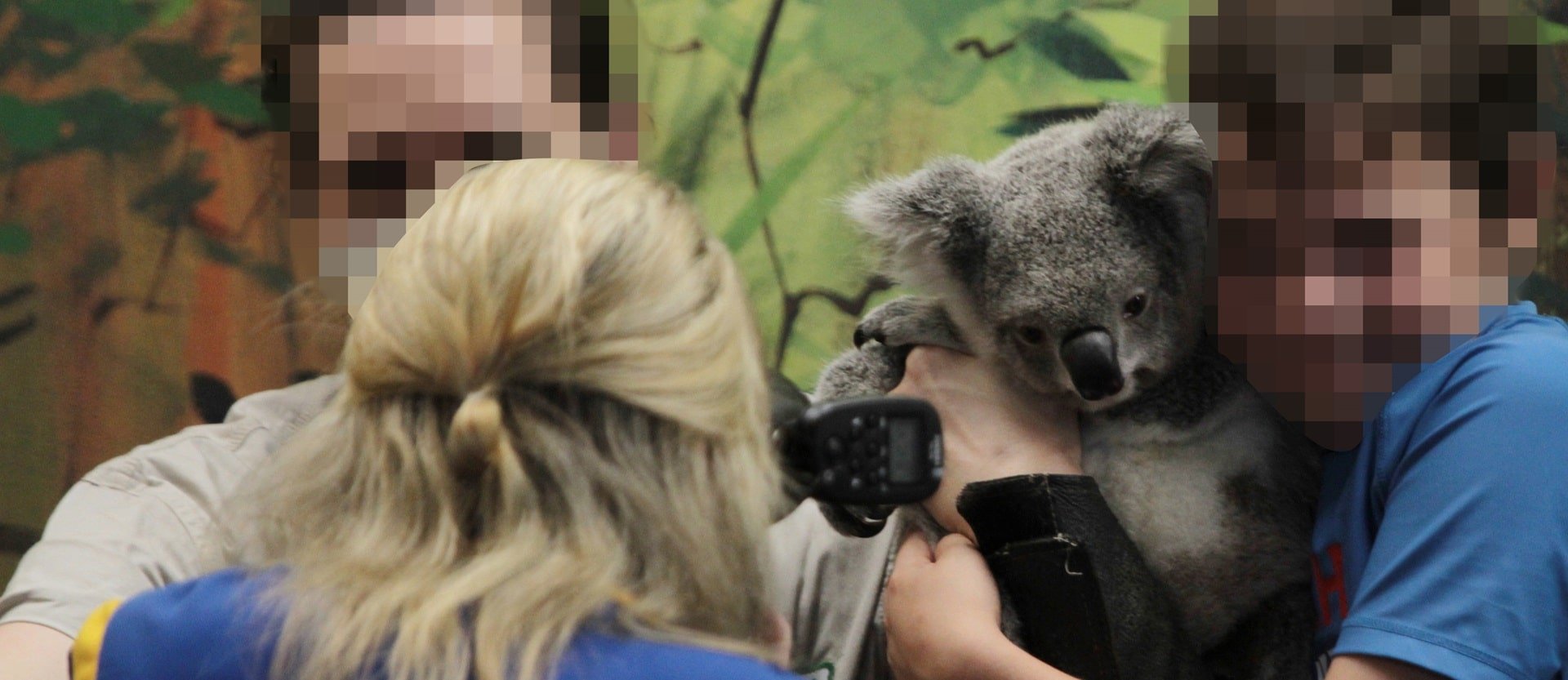
Koalas
Image credit: World Animal Protection / Carol Slater
Koalas: a harmless cuddle or a painful struggle?
Koalas are naturally solitary wild animals who sleep for 20 hours a day to conserve energy after eating difficult-to-digest eucalyptus leaves when in the wild. But in captivity, these ‘cute’ animals are under constant stress as they are forced to be surrounded by people in close encounters for hours each day. As a result, they often try to avoid tourists by trying to climb up and away from them or keep their eyes wide and ears pricked, displaying ‘visitor vigilant’ behaviours.
Many wildlife entertainment venues and theme parks in Queensland, Australia entice tourists by allowing you to ‘cuddle a koala’ for photos. Since the cruelty is masked by using the word ‘cuddle,’ many holidaymakers are tricked into financing this exploitation as they visit these venues.
At venues like Australia Zoo and Dreamworld, koalas can be passed into the arms of 20 different people in just 30 minutes. While most people who visit wildlife entertainment venues are animal lovers, they are usually unaware of the distress and suffering wild animals like koalas go through when cuddled or held for a photo.
Reducing visitor demand for cruel koala cuddles is vital to stop wild koalas from being bred in captivity. Instead, visiting national parks like Toohey Reserve at Mt Gravatt, Magnetic Island National Park, and Noosa National Park can give tourists the opportunity to spot koalas in their natural habitat and makes for a far more memorable experience as they can see the animals roam happy and free.
By working together, we can stop the demand for distressing koala cuddle encounters and other cruel animal selfies. Add your voice to help stop cruel encounters that allow tourists to ‘cuddle a koala’ across Queensland, Australia.
Too close for comfort
Read our 'Too Close for Comfort' report and learn how a selfie with a wild animal can mean a lifetime of suffering for the animal.
Stop cruel koala cuddles
Call on the Queensland Premier to join other states in banning cruel koala encounters, including koala cuddles, selfies.
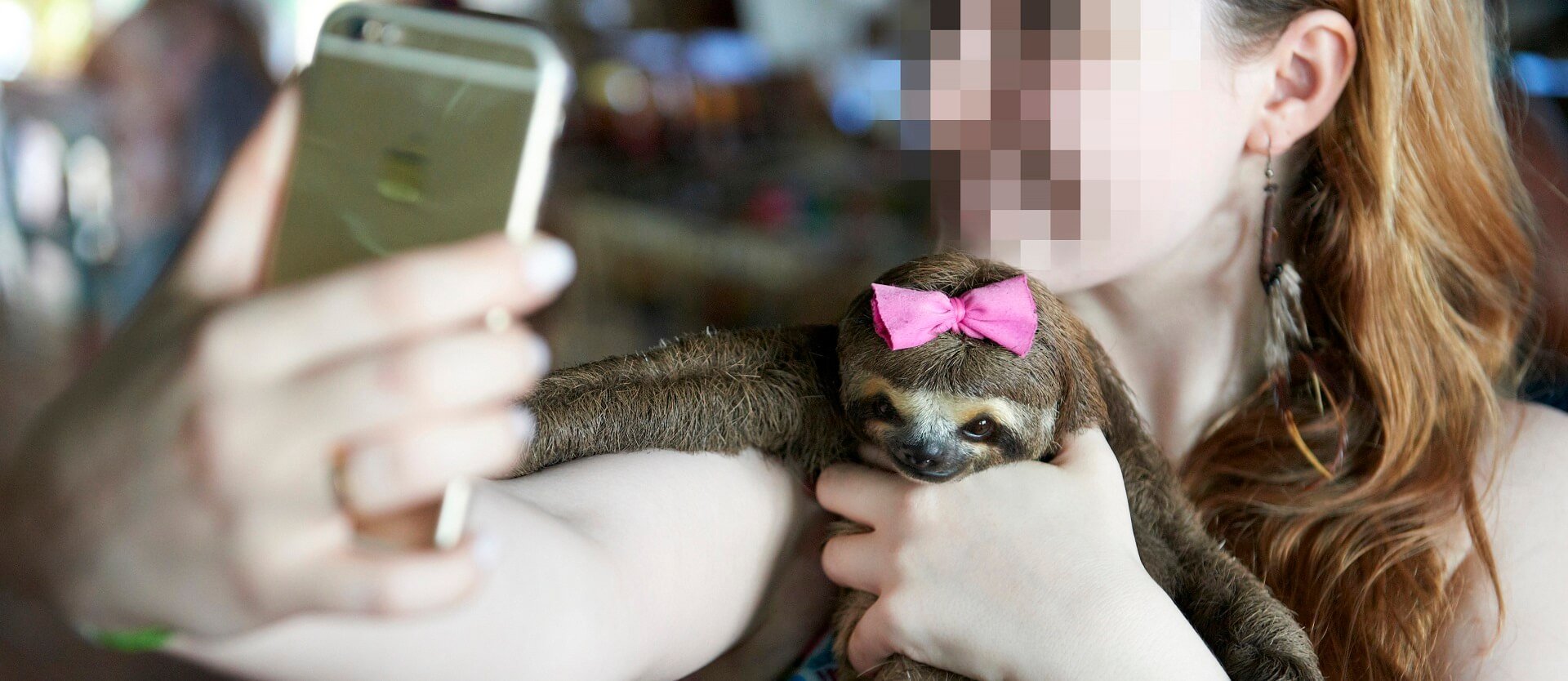
Sloths
Image credit: World Animal Protection / Nando Machado
Taking a sloth selfie for ‘likes’ is endangering their lives
Sloths are quiet, docile, and more fragile than people think. Today, these iconic mammals of the Amazonian rainforest are being cruelly exploited for wildlife selfies with close or direct encounters in various tourist venues.
Baby sloths are ripped from their mothers to cater to the growing demand for sloth selfies. Since the mother sloths are fiercely protective, they are often killed in the process. Soon after, they are passed from the arms of one stranger to another at tourist venues, which most likely causes them severe stress, fear, and anxiety, and negatively impacts their mental well-being.
Most visitors are unaware of the pain sloths must endure daily since their faces may appear to be smiling, no matter what environment they are in. This is simply a result of their facial structure and gives absolutely no indication whatsoever of the emotions they are feeling.
It is extremely likely that poor handling, combined with poor nutrition and housing, all in the name of selfies, is a death sentence for the sloths trapped in the wildlife tourism industry.
Together, we can end wild animal exploitation for commercial gain and transform the travel and tourism industry to protect wild animals everywhere. And with your support, sloths can have a life in the wild, where they can thrive.
Close up on cruelty
Read our 'A close up on Cruelty' report and learn about the harmful impact of wildlife selfies in the Amazon.
Wildlife selfie code
Don’t be part of this ugly picture. Sign our Wildlife Selfie Code now, and help filter cruelty out of selfies.
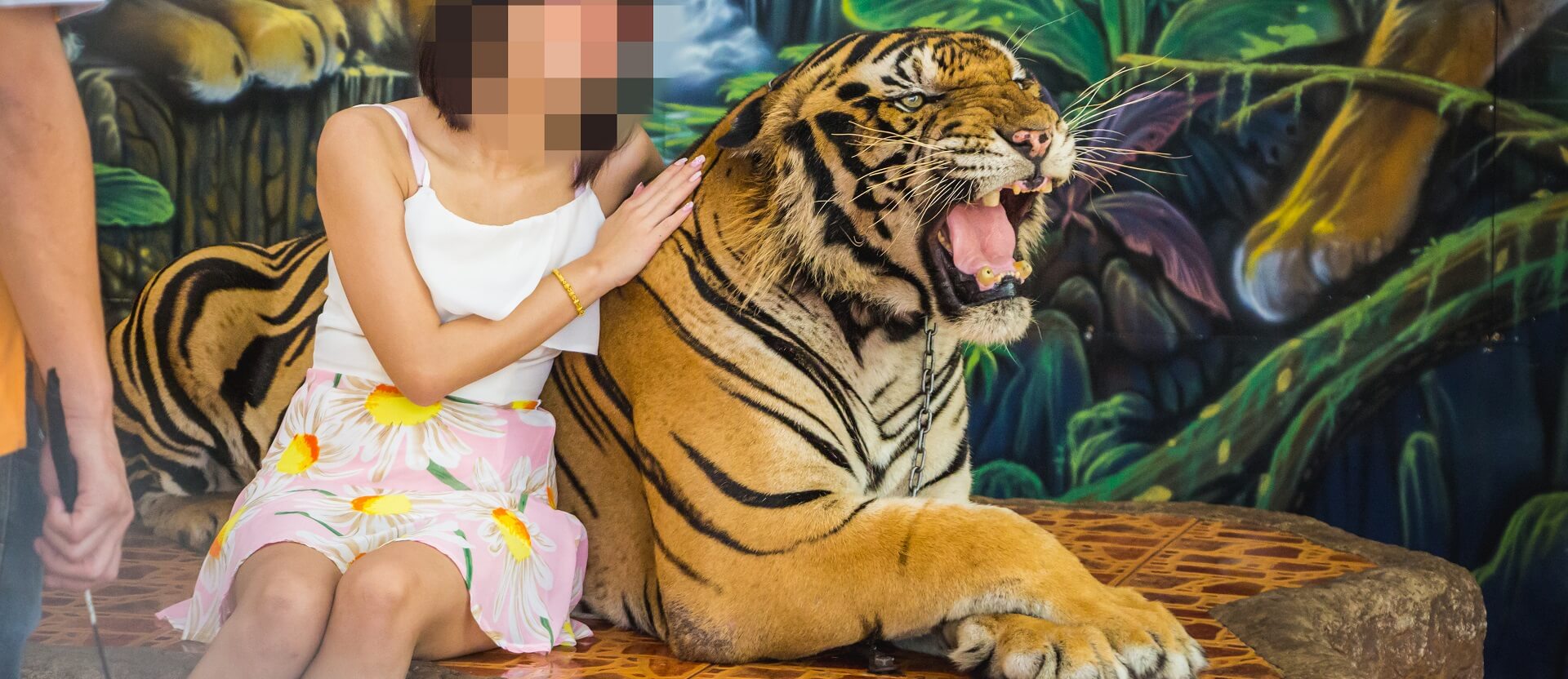
Tigers
A ‘fierce’ tiger selfie can make the animal’s life a misery
Tigers are solitary creatures, except for the relationship between a mother and her cubs. Unfortunately, cubs are being inhumanely ripped from their mothers at an early age – all in the name of tiger selfies with tourists. This causes a great deal of stress and trauma to the mother and her cubs because they are meant to spend the first two years together learning basic life skills.
The cubs are then beaten into submission so they can pose for ‘fierce’ or ‘tough’ selfies. If they try to resist their ‘training,’ they are often punished using pain and fear, and are made to starve. After each day of being handled and hugged by tourists, tigers are usually kept chained up or in small barren cages, fed scraps, don't receive proper veterinary care, and their needs are neglected on many levels.
As victims of irresponsible tourism, tigers are used, abused, and bred in captivity – a method that does not aid conservation. The suffering of these endangered predators is fuelled by the demand for animal selfies.
If tourists knew a ‘once-in-a-lifetime' tiger selfie could cause them a lifetime of misery, they would think twice about paying for a ticket that finances this cruelty. Our report on tiger selfies in Thailand exposes the hidden cost of selfies with tigers and the cruelty behind them.
You can help put an end to this cruel industry by avoiding wildlife tours that allow direct human-animal interaction and choosing wildlife friendly tourism offered by places like Ranthambore National Park in India where you can see tigers in their natural habitat.
Tiger selfies exposed
Read our 'Tiger Selfies Exposed' report and learn how tigers are exploited as part of Thailand’s entertainment industry.
Donate to protect tigers
You can help end the exploitation of tigers for entertainment and traditional medicine.
Wildlife Selfies Do’s and Don’ts
Don’t take a wildlife selfie if it means holding, hugging, or baiting animals with food because they are often beaten into submission to perform such activities.
Do take a wildlife selfie if the animals are not captive, free to move, in their natural environment, and at a safe distance from you – all you have to do is adjust the lens.
